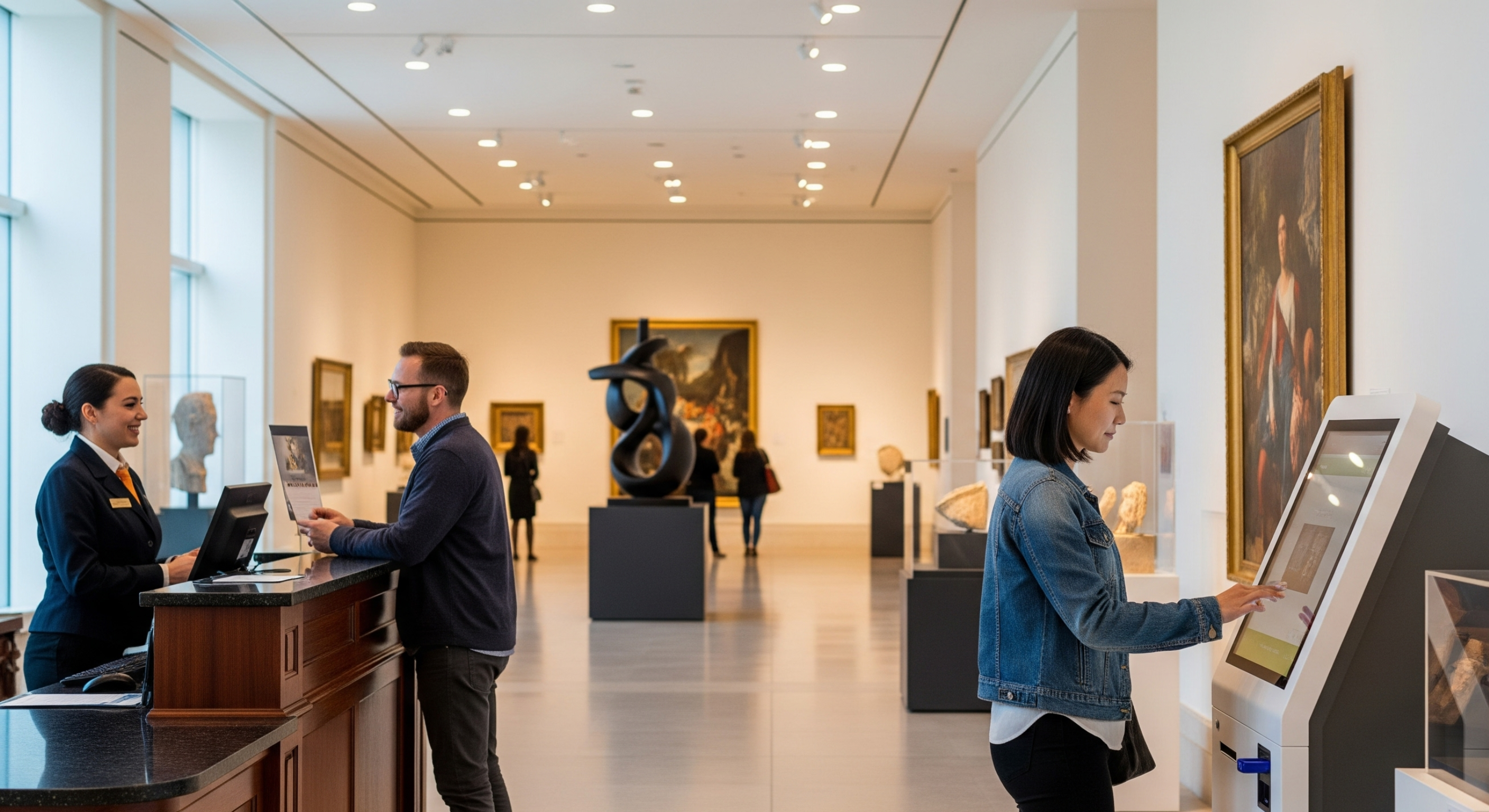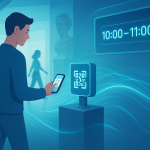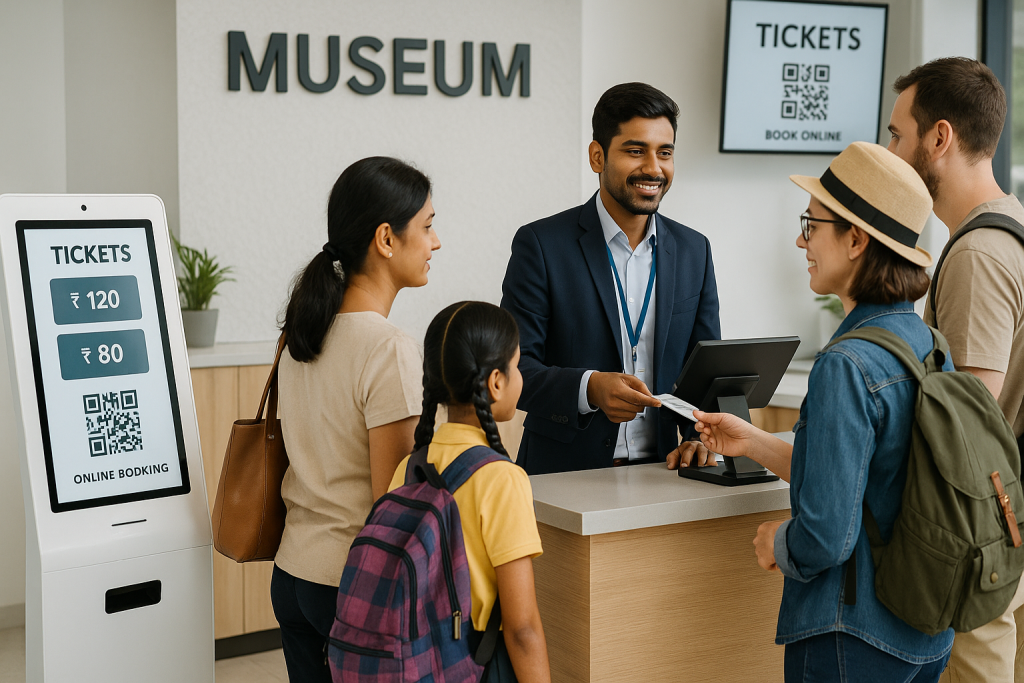Running a museum is no easy task. Every day, you’re balancing long queues, peak hours, and the pressure to keep visitors happy.
Your staff works hard. But when everyone arrives at once, counters get overloaded. Visitors wait longer. Staff get frustrated.
That’s where self-service kiosks for museums come in. They speed up routine tasks like ticketing and payments. Visitors handle things on their own. Staff can then focus on complex requests.
But here’s the truth: kiosks alone aren’t enough. Counters alone aren’t enough either. The real magic happens when kiosks and staff counters work together.
This blog will show you:
- Why museums need both kiosks and counters.
- How kiosks reduce staff overload.
- The benefits of hybrid ticketing.
- Ways kiosks and staff can coordinate better.
- How smart software helps.
- Trends shaping the future.
By the end, you’ll see why the future of museum ticketing isn’t “kiosk vs staff.” It’s kiosk + staff collaboration.
Why do museums need both kiosks and staff counters?
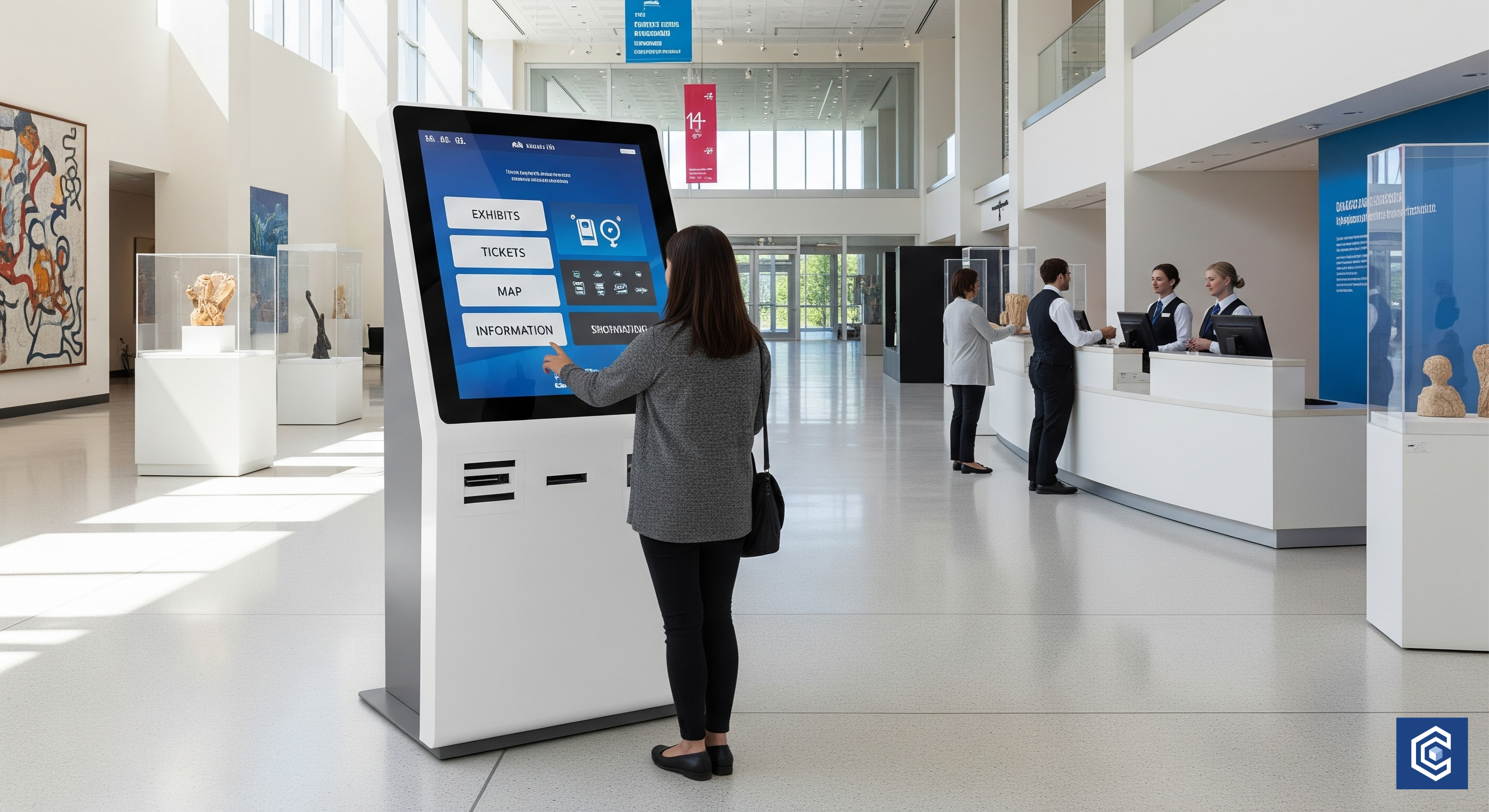
Think about your visitors. Some love quick, digital solutions. They walk straight to a kiosk, tap a few buttons, and they’re done.
Others prefer the human touch. They want to ask questions. They feel more comfortable talking to staff at the counter.
If you only rely on kiosks, some visitors feel lost. If you only rely on counters, your staff gets overloaded fast.
The reality is simple: museums need both.
- Kiosks handle speed. Routine tasks like ticketing, check-ins, and payments move faster.
- Counters handle complexity. Group bookings, special passes, or accessibility needs require personal attention.
- Together, they balance the load. Visitors get choice. Staff don’t get burnt out.
When kiosks and counters work side by side, you’re not replacing people. You’re giving visitors the best of both worlds.
How do self-service kiosks reduce staff overload in museums?
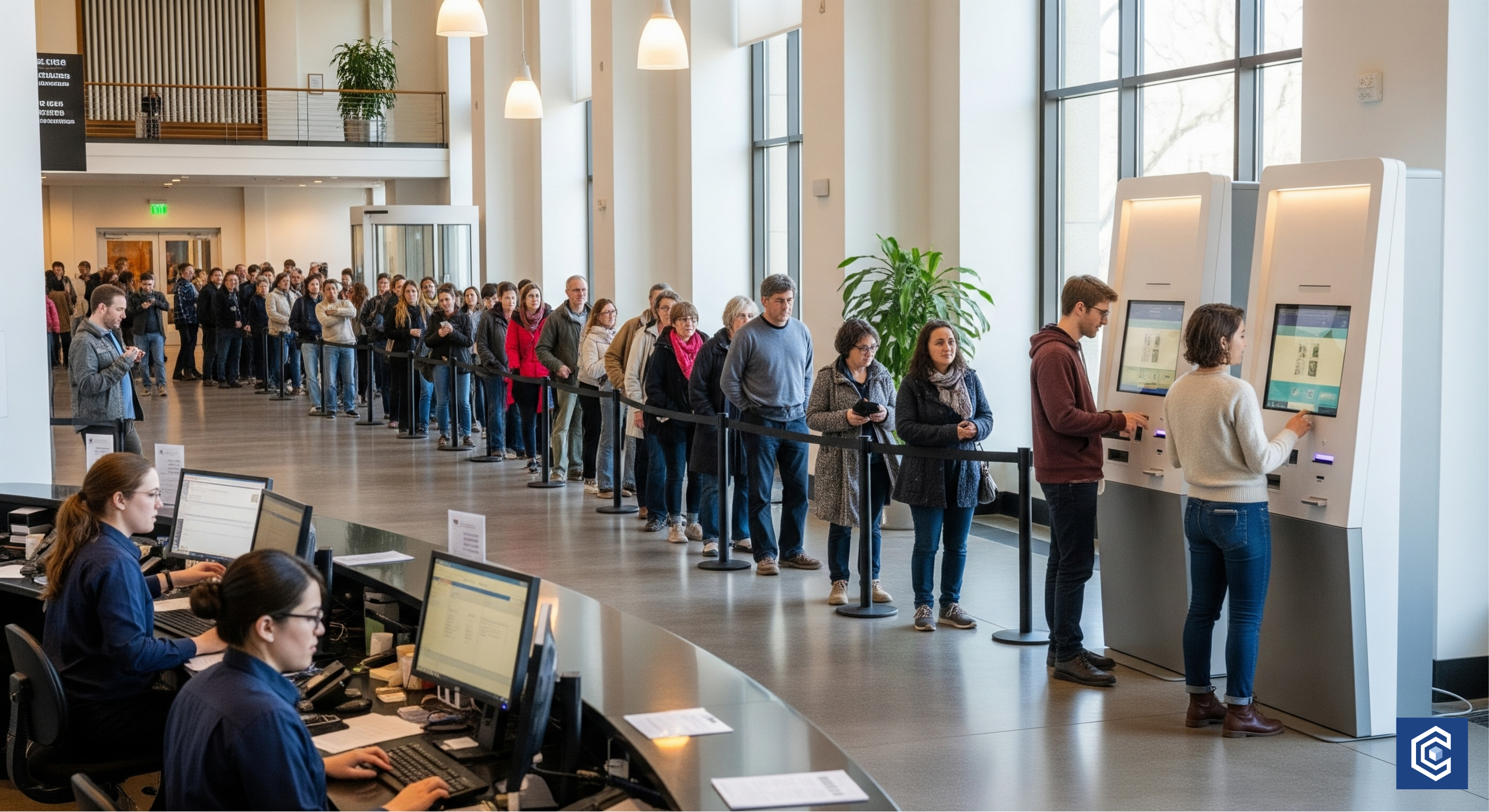
Staff overload is one of the biggest challenges in busy museums. During peak hours, counters get crowded. Visitors wait. Staff feel the pressure.
Self-service kiosks take away that pressure. They handle the repetitive work that eats up staff time.
- Ticketing: Visitors can buy entry tickets directly from kiosks.
- Payments: Quick, cashless, and automated.
- Check-ins: Smooth entry for online bookings and memberships.
When kiosks manage these routine tasks, your staff can focus on what really matters: helping visitors with special needs, solving problems, and making the experience memorable.
This balance means fewer queues, faster service, and less stress for your team.
Think of kiosks as your first line of support. They free up staff energy so your team can shine where human interaction is most valuable.
What are the benefits of hybrid ticketing for museums?
Hybrid ticketing is when kiosks and staff counters work together. Not one replacing the other. But both supporting each other.
This model gives museums a clear edge.
- Shorter queues. Kiosks handle quick sales. Counters step in for complex cases. Visitors don’t get stuck waiting.
- Balanced workload. Staff don’t face nonstop pressure. Kiosks take the routine tasks. Staff focus on people who need extra help.
- Accessibility for all. Tech-savvy visitors love kiosks. Others who prefer human contact can still go to the counter. Everyone feels included.
- Improved service efficiency. Automation speeds up the basics. Staff deliver the personal touch where it matters most.
The result? Happier visitors. Less stressed staff. A smoother flow inside your museum.
Hybrid ticketing isn’t just convenient. It’s a smarter way to run visitor services today.
How can kiosks and staff counters work together smoothly?
The key is not just having both systems. It’s making sure they work in sync.
Here’s how museums can make it happen:
- Adopt a kiosk-first strategy. Let kiosks handle standard tasks like ticketing, check-ins, and payments. This clears the rush at counters.
- Use staff counters for exceptions. Group bookings, special discounts, or accessibility needs should go to staff. This keeps personal service alive.
- Keep everything connected. A strong kiosk management system makes sure kiosks and counters share the same real-time data. No duplicate tickets. No confusion.
- Encourage collaboration. Train staff to guide visitors toward kiosks when it’s faster. Let kiosks flag cases where staff support is needed.
This setup creates true kiosk and counter synergy. Visitors move smoothly through the entry process. Staff stay productive, not overloaded.
When kiosks and staff collaborate, your museum delivers both speed and service without compromise.
What role does kiosk software play in improving customer service efficiency?
Hardware is only half the story. What makes kiosks truly useful is the software running behind them.
A strong kiosk management system connects your kiosks and counters. Everything stays in sync. Tickets sold at kiosks show up instantly at staff counters. No confusion. No double booking.
Good software also gives you real-time insights. You can see which kiosks are busy. You can spot peak visitor times. You can assign staff where they’re needed most.
And here’s the big win: software automates updates. Prices, discounts, and special passes are managed from one place. No manual errors. No wasted time.
When kiosks and counters run on smart software, your service becomes faster and more reliable. Visitors enjoy a smoother experience. Your staff stays focused on what matters most delivering personal care when it’s needed.
What are the latest self-service kiosk trends in museums?
Self-service kiosks are evolving fast. Museums that adopt the latest trends stay ahead in visitor experience.
Here are some key shifts to watch:
- Contactless experiences. Visitors now expect touch-free check-ins and mobile payments. It’s faster and safer.
- AI-powered guidance. Smart kiosks can suggest exhibitions, events, or even the best time to visit certain galleries.
- Personalization. Kiosks recognize returning visitors or members and offer tailored options.
- Retail-style integration. Just like in modern stores, kiosks in museums can cross-sell memberships, gift shop items, or guided tours.
These trends aren’t just about technology. They’re about making the museum visit more engaging and convenient.
Adopting them ensures your museum meets visitor expectations today and builds loyalty for tomorrow.
How does EveryTicket create kiosk + counter synergy?
At EveryTicket, we know museums don’t just need kiosks or counters. They need both to work together seamlessly.
That’s why our system is built for hybrid ticketing. Kiosks handle the quick, everyday tasks. Counters step in when personal help is needed. And everything stays connected in real time.
Here’s how EveryTicket makes it easy:
- Smooth integration. Kiosks and staff counters talk to each other through one platform.
- Load balancing. The system automatically spreads work between kiosks and staff, reducing pressure on your team.
- Smart insights. Real-time dashboards show visitor flow, peak hours, and staff needs.
- Better collaboration. Staff can guide visitors to kiosks when it’s faster, or step in when human support is best.
The result? Shorter queues. Happier visitors. Less stressed staff.
EveryTicket helps museums deliver efficiency without losing the human touch.
Why the future of museum ticketing is kiosk + staff collaboration
The future of museum ticketing isn’t a choice between kiosks or staff. It’s about both working together.
Kiosks bring speed and convenience. Counters bring care and personal service. When they run side by side, your museum delivers the best visitor experience without overloading staff.
With EveryTicket, you get a system designed for this balance. Faster entry. Happier visitors. Relaxed staff.
Now is the time to move beyond “either/or.” The winning formula is kiosk + staff collaboration.
Fill the Inquiry form to book a free demo.
